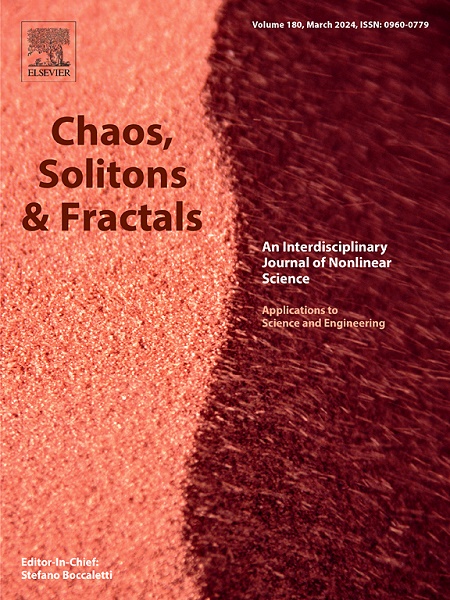Community detection in directed networks based on network embeddings
IF 5.3
1区 数学
Q1 MATHEMATICS, INTERDISCIPLINARY APPLICATIONS
引用次数: 0
Abstract
In real-world scenarios, many systems can be represented using directed networks. Community detection is a foundational task in the study of complex networks, providing a method for researching and understanding the topological structure, physical significance, and functional behavior of networks. By utilizing network embedding techniques, we can effectively convert network structure and additional information into node vector representations while preserving the original network structure and properties, solving the problem of insufficient network representations. Compared with undirected networks, directed networks are more complex. When conducting community detection on directed networks, the biggest challenge is how to combine the directional and asymmetric characteristics of edges. This article combines network embedding with community detection, utilizing the cosine similarity between node embedding vectors, and combining the ComDBNSQ algorithm to achieve non overlapping community partitioning of directed networks. To evaluate the effectiveness of the algorithm, we conduct experiments using both artificial and real data sets. The numerical results indicate that the algorithm outperforms the comparison algorithms (Girvan–Newman algorithm and Label Propagation algorithm) in terms of modularity, and can perform high-quality directed network community detection.
基于网络嵌入的有向网络中的社群检测
在现实世界中,许多系统都可以用有向网络来表示。群落检测是复杂网络研究中的一项基础性工作,它为研究和理解网络的拓扑结构、物理意义和功能行为提供了一种方法。利用网络嵌入技术,我们可以在保留原有网络结构和属性的基础上,有效地将网络结构和附加信息转化为节点向量表示,从而解决网络表示不足的问题。与无向网络相比,有向网络更为复杂。在有向网络上进行社群检测时,如何结合边的方向性和非对称性特征是最大的挑战。本文将网络嵌入与社群检测相结合,利用节点嵌入向量之间的余弦相似性,结合 ComDBNSQ 算法,实现了有向网络的非重叠社群划分。为了评估该算法的有效性,我们使用人工数据集和真实数据集进行了实验。数值结果表明,该算法在模块性方面优于比较算法(Girvan-Newman 算法和标签传播算法),并能进行高质量的有向网络社区检测。
本文章由计算机程序翻译,如有差异,请以英文原文为准。
求助全文
约1分钟内获得全文
求助全文
来源期刊

Chaos Solitons & Fractals
物理-数学跨学科应用
CiteScore
13.20
自引率
10.30%
发文量
1087
审稿时长
9 months
期刊介绍:
Chaos, Solitons & Fractals strives to establish itself as a premier journal in the interdisciplinary realm of Nonlinear Science, Non-equilibrium, and Complex Phenomena. It welcomes submissions covering a broad spectrum of topics within this field, including dynamics, non-equilibrium processes in physics, chemistry, and geophysics, complex matter and networks, mathematical models, computational biology, applications to quantum and mesoscopic phenomena, fluctuations and random processes, self-organization, and social phenomena.
 求助内容:
求助内容: 应助结果提醒方式:
应助结果提醒方式:


